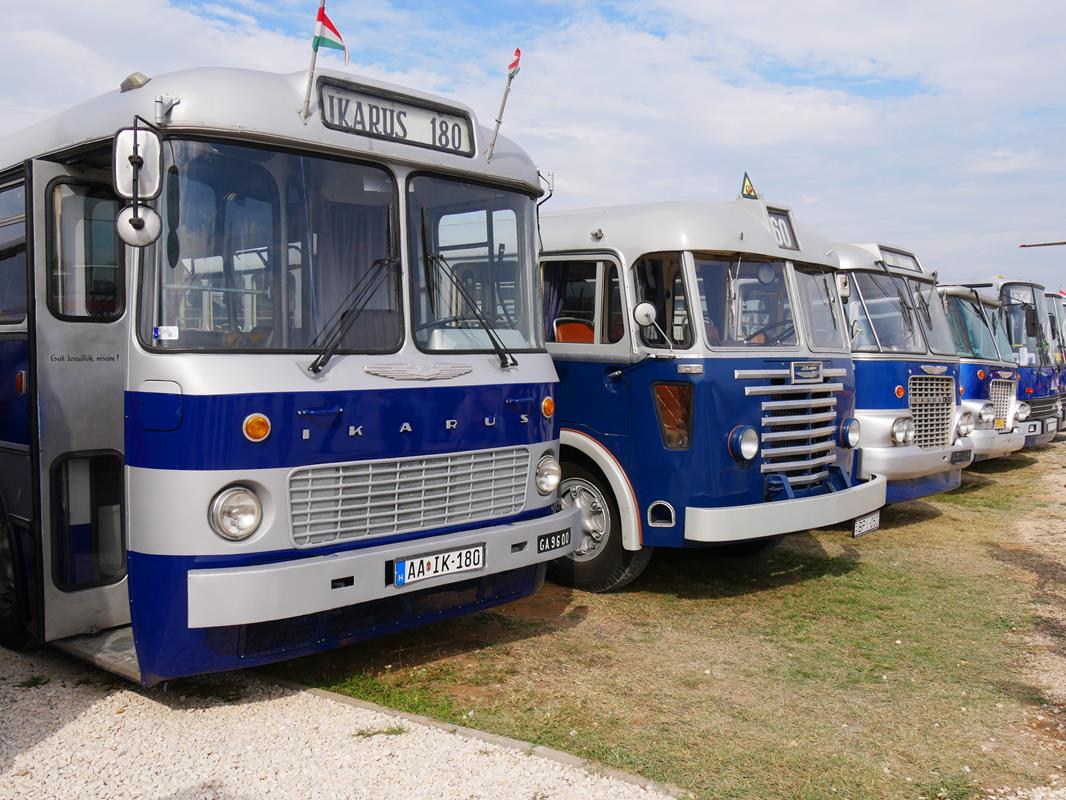Ikarus, a brand all Hungarians can be proud of – PHOTOS

The fifth annual international Ikarus bus gathering took place in 2023 in the Aeropark, the aviation museum located near the Budapest Airport. The event brought together more than 100 classic vehicles from Hungary and beyond. Here is a report about what you could see there and what you should know about that famous Hungarian success brand.

In mythology, Icarus was the first man to fly, embodying curiosity, ambition, and ingenuity. His story represents the drive to overcome fear and achieve great things.

The event showcased over 100 Ikarus buses, including rare and unique models in addition to well-known intercity, suburban, and urban models. Visitors had the chance to see exclusive or limited-production versions such as the double-decker Ikarus, a conference bus used by East Germany’s government, rare models from British airports, ambulances converted from buses, and beautifully restored vintage models like the Ikarus 30, 311, 60, 55, 66, 180, 620, 630, and various double-deckers.

Despite once being one of the world’s largest bus manufacturers, Ikarus never maintained a historical collection of its own vehicles. Today, preserved buses belong to museums, transportation companies, former drivers, mechanics, and dedicated enthusiasts who occasionally bring them out for public viewings, drawing significant interest. Attendees not only had the opportunity to admire these classic buses but could also board them and experience their unique interiors and atmosphere firsthand. In Hungary, there is a deep-seated passion and respect for domestically manufactured vehicles, whether they are locomotives, motorcycles, or buses.

The name Ikarus evokes memories of one of Hungary’s most successful industrial products of the 20th century. Established in 1949 through the merger of three nationalized companies, Ikarus Karosszéria és Járműgyár (Ikarus Body and Vehicle Factory) soon became a major global player in bus production. The name first appeared on an MÁVAG Tr 5 model with a 55-seat capacity, but the first true Ikarus bus was the self-supporting Ikarus 30, introduced in 1950. This model, with a top speed of 78 km/h, gained the nickname “Nylon” among passengers, as its rooftop window design caused extreme heat in summer, much like the fashionable nylon shirts of the era.

In the 1950s and 1960s, the 60, 31, and 311 models were iconic and could be found in nearly every Hungarian transport and industrial fleet. Among Ikarus legends, the 55/66 model—nicknamed the “Faros” (Rear-Engine)—stood out with a distinctive design, considered one of the most beautiful buses ever built. Manufactured until 1973, its rear-engine placement allowed for a more spacious and efficient interior design. The bus was also designed for easy maintenance, featuring easily accessible mechanical components.

From 1958 to 1972, Ikarus produced the 620 for urban transit and the 630 for long-distance routes. These buses did not represent significant advancements in technology but were built to meet rising passenger demand.

One of the key models defining Budapest’s streetscape for decades was the articulated Ikarus 180, designed to tackle urban congestion. However, the company’s greatest success was the Ikarus 200 series—the most widely produced bus series in the world. These models dominated Hungary’s roadways and were used in about 40 countries, earning considerable international acclaim.
Starting in 1964, the Council for Mutual Economic Assistance (CMEA) designated Hungary as the hub for bus manufacturing. Consequently, Ikarus established a factory in Székesfehérvár and launched engine production in Győr. By the late 1970s, Ikarus had become Europe’s largest bus maker, producing 10,000 units annually. In the early 1980s, it ranked among the top five bus manufacturers worldwide, exporting vehicles to nearly 60 countries, including the Soviet Union, East Germany, the U.S., China, and even parts of Africa and Scandinavia.
To read or share this article in Hungarian, click here: Helló Magyar
Read also:
- A true Hungarian success story: the Ikarus bus – read more about the buses HERE
- Forty-five years since the first Ikarus articulated bus bid farewell to Budapest







